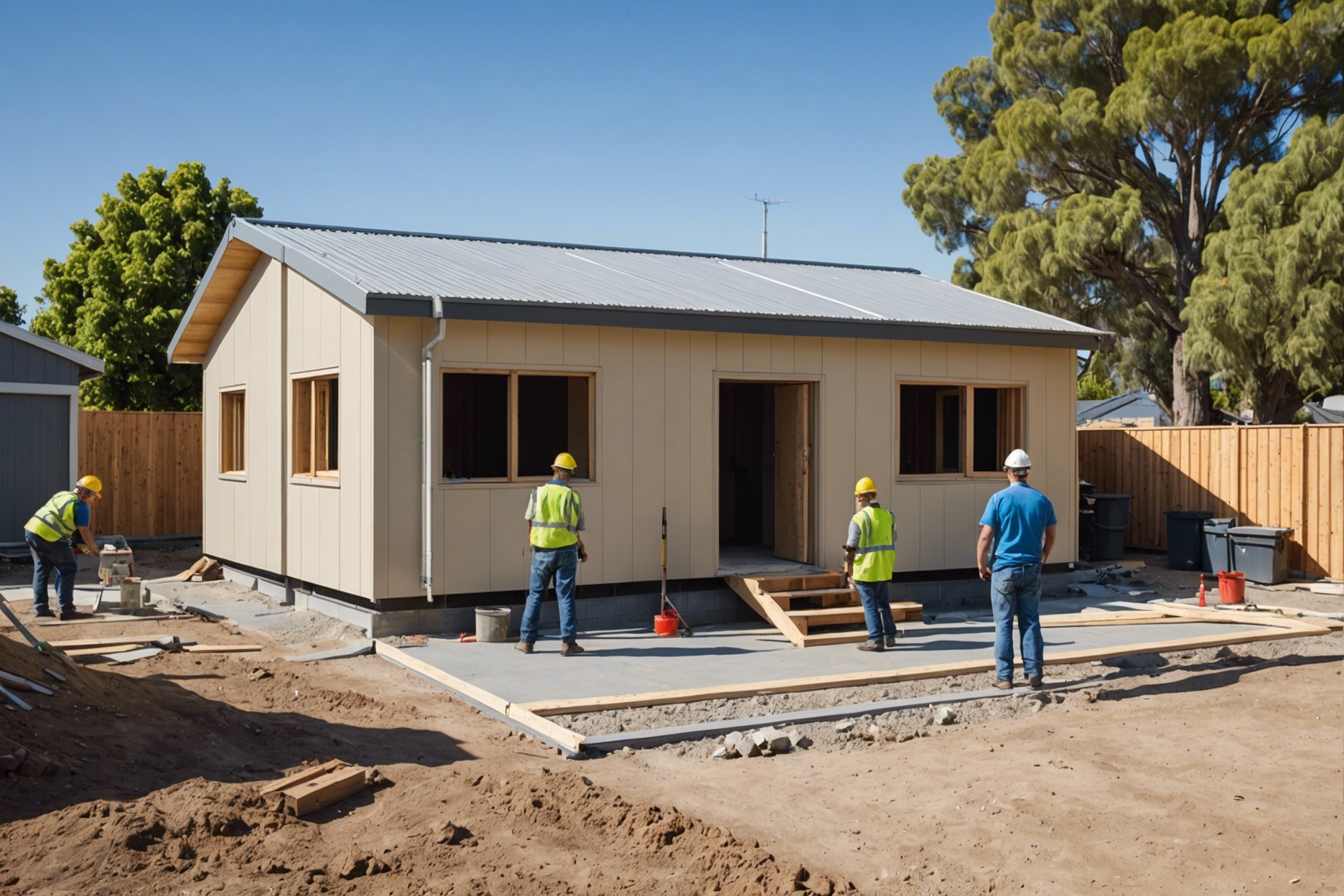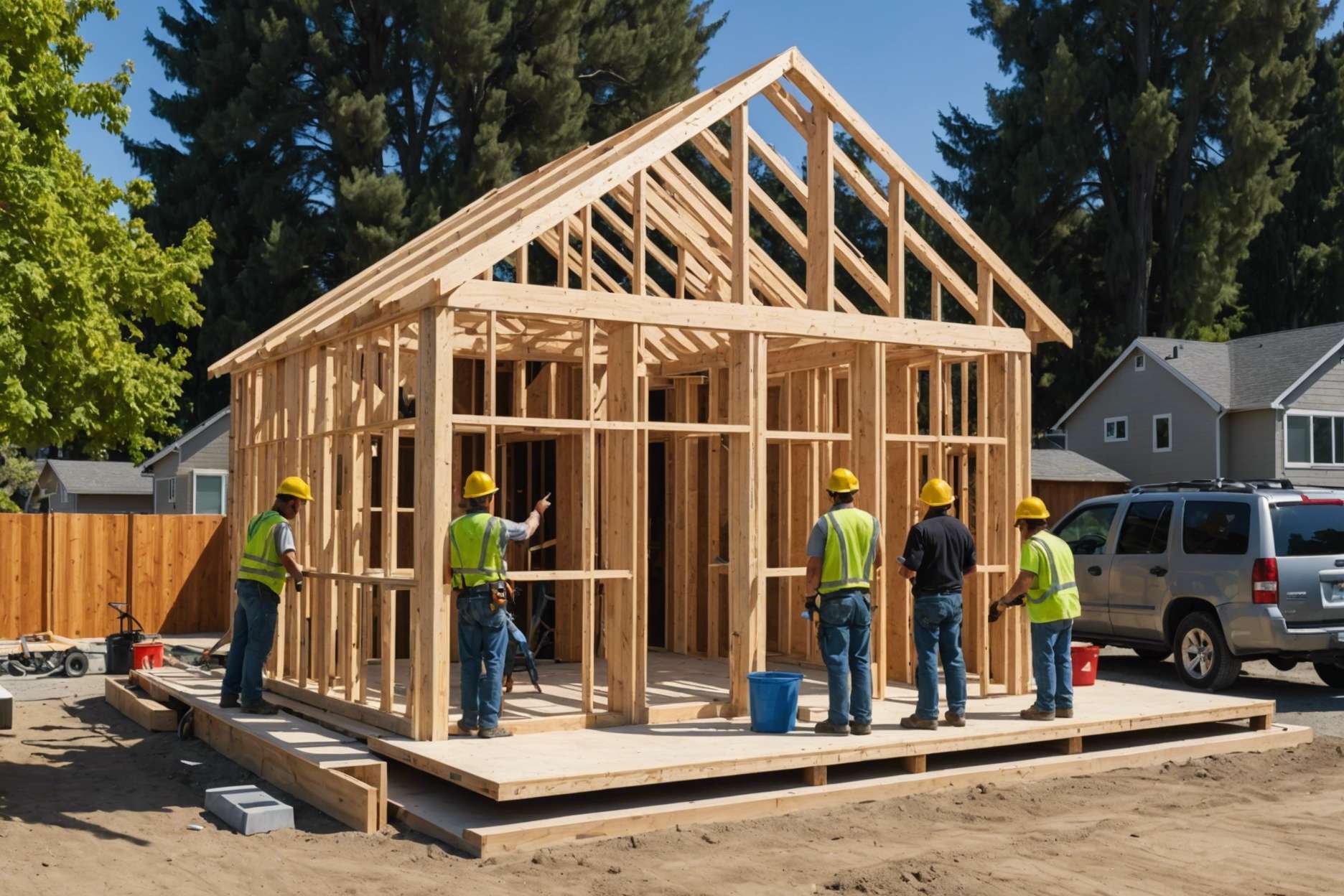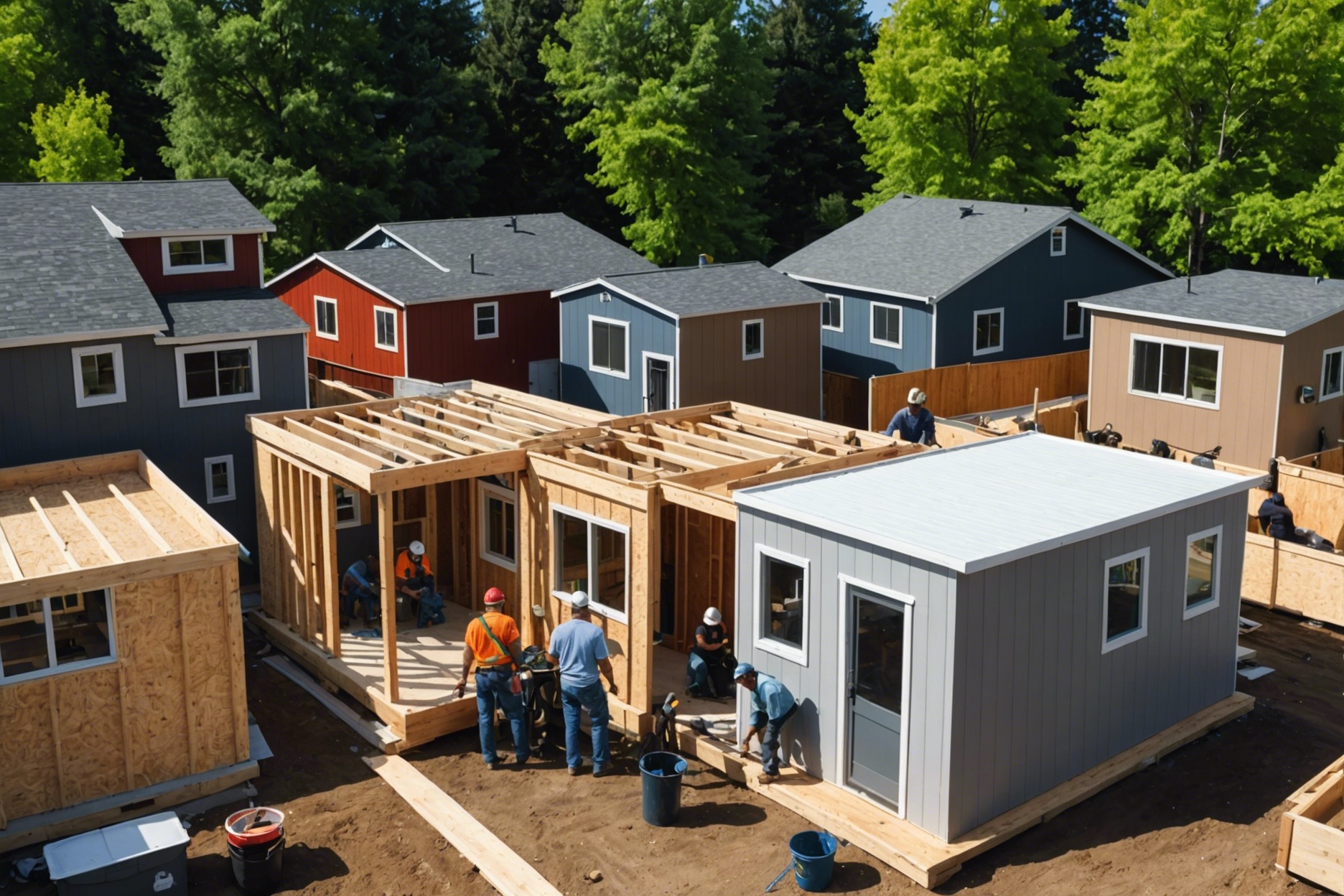California’s 2024 ADU Legislation and Its Impact on Housing
- #General Remodeling

- Smooth Plaster Finish
- Shimmering Pebble Finish
California’s 2024 ADU legislation simplifies the addition of Accessory Dwelling Units, enhancing housing affordability by allowing constructions like granny flats on existing properties. This move is expected to increase housing supply and provide more budget-friendly housing options across the state.
Introduction to California’s 2024 ADU Legislation
California’s new ADU legislation, effective from January 1, 2024, introduces significant changes aimed at boosting housing production. The laws cover various aspects from streamlining processes to adjusting construction rules, making it easier for property owners to develop Accessory Dwelling Units (ADUs), commonly known as granny flats.
Key changes include:
- Assembly Bill 1033: Allows ADUs to be built and sold as condominiums, expanding ownership opportunities.
- AB 2221: Streamlines the ADU construction process, particularly in unused commercial spaces, simplifying the steps property owners must take.
Further improvements in the legislation:
- Authorities must provide feedback on ADU proposals within 60 days, including suggestions for necessary adjustments to gain approval.
- Adjustments to size and height restrictions for detached ADUs enhance design flexibility.
- Junior ADUs no longer require a dedicated bathroom if there’s an accessible one in the primary residence.
- Elimination of the mandatory fire sprinkler requirement in the primary residence when an ADU is constructed.
It’s important to note that specific regulations may vary by county or city, reflecting local housing needs and conditions.

Impact on Housing Affordability in California
Starting in 2024, California’s new housing laws aim to make it easier to build homes. This is a big step towards making housing more affordable for everyone. Here’s how these changes could help:
- Senate Bill 423 speeds up the approval for apartment buildings that have some units priced lower for Californians who don’t earn as much.
- SB 4 focuses on affordable housing on properties owned by religious groups and nonprofit colleges.
- AB 1287 lets developers build taller and denser buildings if they include more units for middle-income people.
- SB 684 makes it easier to split large land into smaller sections for housing.
These laws are designed to reduce the challenges of building houses by getting rid of some red tape. This could lead to more homes being built faster, which might help with the housing shortage in California.
However, these changes are not without opposition. Local governments, labor groups, and environmental advocates have concerns that need to be addressed.
Challenges and Considerations for Construction
- California’s new ADU laws for 2023-2024 aim to simplify adding accessory dwelling units or ADUs to properties. These changes make it easier for homeowners to build and, in some cases, sell these units separately.
- Key legislative updates include:
- Assembly Bill (AB) 1033 allows ADUs to be sold as condominiums, increasing property owner flexibility.
- AB 2221 streamlines the construction process, especially in commercial areas.
- AB 976 removes restrictions on owner occupancy, freeing up rental possibilities.
- AB 434 requires cities to adopt pre-approved ADU plans by January 2025, potentially speeding up approval times.
- The new regulations have also eliminated some previous barriers:
- Permitting agencies must now provide feedback on ADU proposals within 60 days.
- Changes in size and height limits for detached ADUs.
- Junior ADUs no longer need a separate bathroom if there’s access to one in the main residence.
- The removal of the mandatory fire sprinkler installation requirement in the main residence when an ADU is built.
- It’s important to note, the specifics of these laws can vary by local areas. Homeowners should consult with experts to navigate these changes effectively.

Future Outlook and Further Developments
- Predicting the future of ADU legislation in California suggests ongoing changes that could further streamline approvals and reduce costs. These modifications aim to boost urban development and provide more housing options. For homeowners looking to expand, this means easier and more affordable ways to build ADUs. Learn about ADU construction services at EHD Builders here.
- Long-term impacts of ADU legislation are expected to significantly alter California’s housing landscape. By increasing housing supply, ADUs help stabilize rental prices and offer more living options. This is especially beneficial in densely populated areas where housing shortages are prevalent.
- Potential amendments to the ADU legislation might include adjustments to property size requirements, parking regulations, and ownership rules. These changes aim to make ADU projects more feasible for a larger number of property owners. For details on how these changes could affect your property, consider getting a free estimate from EHD Builders here.
- The role of ADUs in urban development is increasingly recognized as vital for creating diverse and inclusive communities. These units can help meet the demand for affordable rental options while integrating seamlessly into existing neighborhoods.
- For business owners and developers, the evolving ADU legislation represents an opportunity to invest in a growing sector of California’s real estate market. Understanding these trends can guide strategic decisions in property development and management. Explore financing options for ADU projects at EHD Builders here.

FAQ
What are the key changes in California’s 2024 ADU legislation?
The 2024 ADU legislation in California includes several significant changes that aim to facilitate easier development of Accessory Dwelling Units (ADUs). Noteworthy amendments include allowing ADUs to be built and sold as condominiums (Assembly Bill 1033), streamlining the ADU construction process especially in commercial spaces (AB 2221), reducing feedback time on proposals to 60 days, modifying size and height restrictions, and removing the requirement for dedicated bathrooms in junior ADUs and mandatory fire sprinkler installations in the main residence.
How do the new laws impact housing affordability in California?
The 2024 legislation seeks to improve housing affordability by speeding up the approval process for apartment buildings with affordable units (Senate Bill 423), enabling denser construction on properties owned by churches and nonprofit colleges (Senate Bill 4), and allowing taller and denser buildings if more middle-income housing is included (AB 1287). These laws aim to reduce bureaucratic hurdles, accelerating the development of new homes and potentially easing the housing shortage.
What are the concerns surrounding the new ADU laws?
Despite the potential benefits, the new ADU laws face opposition from various groups. Local governments, labor organizations, and environmental advocates have expressed concerns that need to be addressed. The specifics of these concerns are not detailed in the article, but they likely relate to the impacts on local communities, labor markets, and environmental sustainability.
How do the ADU regulations vary across different locales?
The specifics of the ADU laws can vary significantly by county or city, tailored to meet local housing needs and conditions. It’s important for homeowners to consult with local experts or authorities to understand the regulations that apply to their specific area and ensure compliance.
What future developments can be expected in ADU legislation?
Future amendments to ADU legislation may include changes to property size requirements, parking regulations, and ownership rules, further facilitating the development of ADUs. These ongoing adjustments aim to make ADU projects more feasible for a broader range of property owners and may continue to evolve to better address the housing needs in California.
How do ADUs fit into urban development and community planning?
ADUs play a crucial role in urban development by providing more housing options in densely populated areas, helping to stabilize rental prices and integrate affordable rental options within communities. They are increasingly seen as essential for creating diverse and inclusive neighborhoods and are a strategic investment opportunity in the real estate market.









